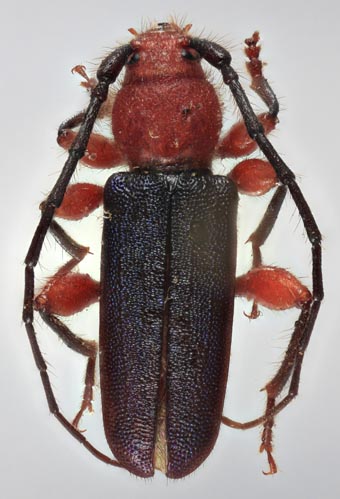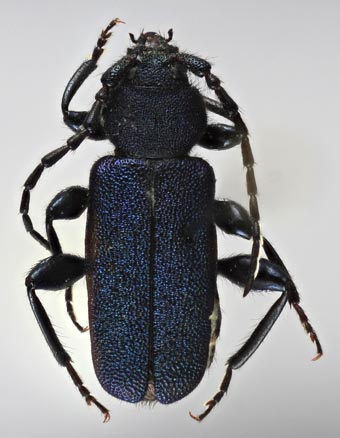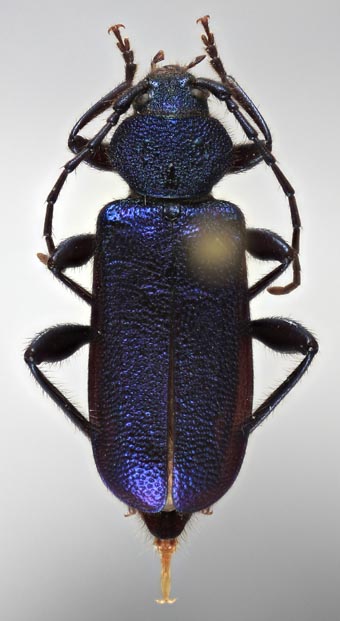 |
Callidiini
Classification
Introduction
- The tribe Callidiini Kirby, 1837 currently contains 206 species in 41 genera. Photographs of 4 exemplar specimens are currently available for this tribe.
Diagnostic Features of Adults
- Body size variable, from small (less than 10 mm) to moderate-sized (between 10-40 mm); generally ovoid or elongate. Eyes generally reniform, complete (not completely divided into upper and lower lobes). Antennae variable, from filiform to serrate, flabellate, or expanded laterally, unarmed; antennae 11-segmented, length variable, from short (not extending beyond tip of abdomen) to long (extending beyond tip of abdomen). Pronotum variable, from generally subquadrate (about as long as wide) to transverse (distinctly wider than long); lateral margins of pronotum unarmed, without distinct spines or tubercles. Mesocoxal cavities open to mesepimeron. Elytral apices without distinct spines.
Diagnostic Features of Larvae
- Larvae. Form robust and of a contracted appearance. Head subtrapezoidal, widest well behind middle; with three pairs, one pair or no ocelli. Mandible with a deep longitudinal impression on outer face (shallow in Semanotus). Maxilla with lobe glabrous on entire inner margin; process of palpifer nearly as long as or longer than third segment of maxillary palpi (if smaller, then three ocelli present). Antenna with first and second segments quadrate to strongly elongate. Gula distinct, raised. Prothorax densely setose laterally, the setae being more or less equal in length; pronotum not more than twice as wide as long; median cleavage line incomplete, though often deep; posterior half lightly reticulate and with some rather coarse longitudinal striae. Postnotal fold present. Sternum with two paramedian or one median oval, glabrous area, the eusternum not clearly defined. Abdomen with ampullae broad, often finely reticulate, with a distinct but shallow longitudinal median impression; posterior transverse impression incomplete. Pleural discs distinct on segments three to six; each disc a deep pore surrounded by a reticulate area. Legs two- or three-segmented; at least as long as maxillary palp; segments more or less globular; unguiculus imbricately spinose. Adapted from Duffy (1953).
Geographic Distribution of Tribe
Biology and Economic Importance
- Members of this tribe are known from various host plant families and several species are considered economically important. Species of this tribe are potentially invasive outside their native range.
Selected References to Adult Specimens
Selected References to Larvae Specimens
|  |

Callidiellum cupressi
(Van Dyke, 1923); dorsal
Cerambycidae:Cerambycinae:Callidiini
Photograph © E.H. Nearns

Callidium texanum
Schaeffer, 1917; dorsal
Cerambycidae:Cerambycinae:Callidiini
Photograph © E.H. Nearns

Callidium violaceum
(Linnaeus, 1758); dorsal
♀ specimen
Cerambycidae:Cerambycinae:Callidiini
Photograph © E.H. Nearns
All Callidiini exemplar species images
|




